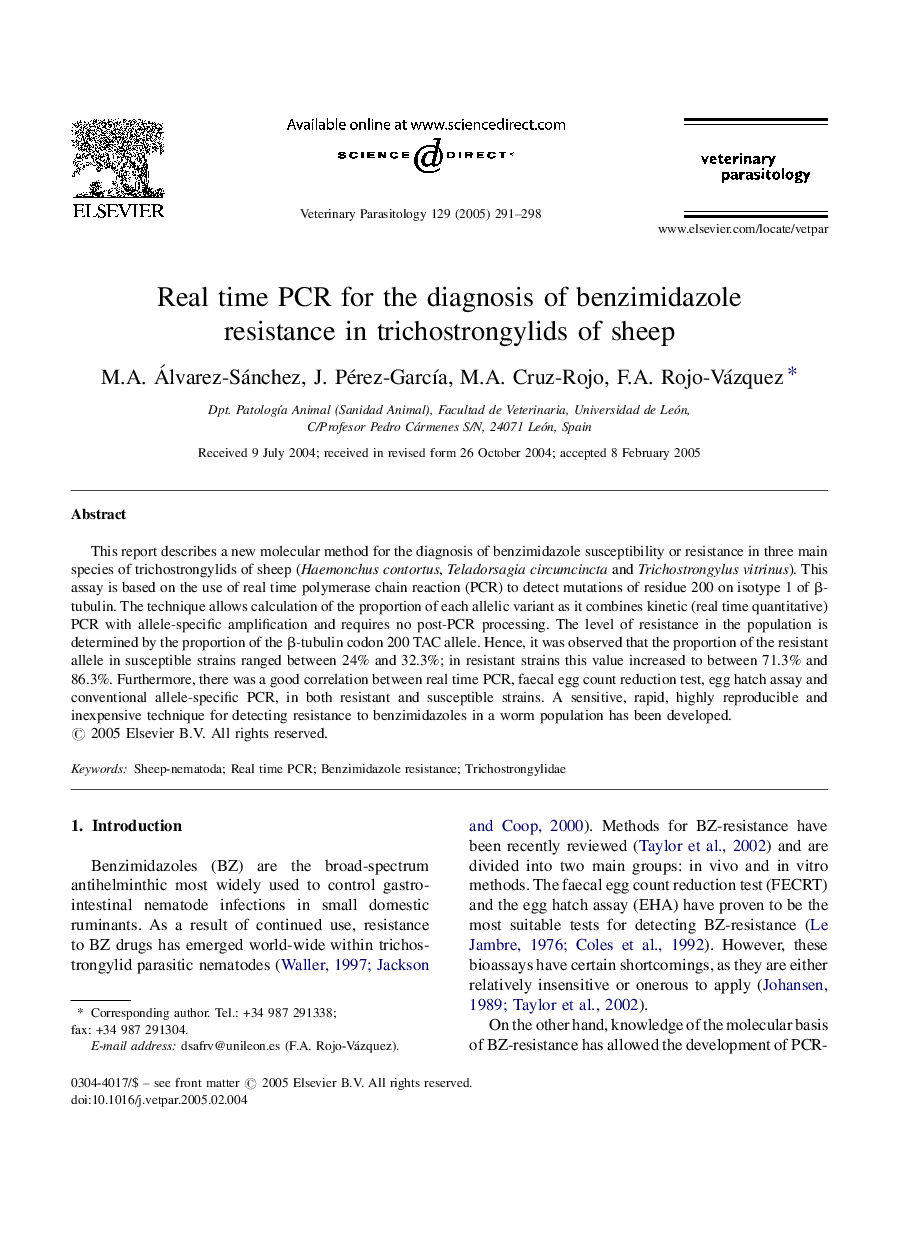| Article ID | Journal | Published Year | Pages | File Type |
|---|---|---|---|---|
| 8991191 | Veterinary Parasitology | 2005 | 8 Pages |
Abstract
This report describes a new molecular method for the diagnosis of benzimidazole susceptibility or resistance in three main species of trichostrongylids of sheep (Haemonchus contortus, Teladorsagia circumcincta and Trichostrongylus vitrinus). This assay is based on the use of real time polymerase chain reaction (PCR) to detect mutations of residue 200 on isotype 1 of β-tubulin. The technique allows calculation of the proportion of each allelic variant as it combines kinetic (real time quantitative) PCR with allele-specific amplification and requires no post-PCR processing. The level of resistance in the population is determined by the proportion of the β-tubulin codon 200 TAC allele. Hence, it was observed that the proportion of the resistant allele in susceptible strains ranged between 24% and 32.3%; in resistant strains this value increased to between 71.3% and 86.3%. Furthermore, there was a good correlation between real time PCR, faecal egg count reduction test, egg hatch assay and conventional allele-specific PCR, in both resistant and susceptible strains. A sensitive, rapid, highly reproducible and inexpensive technique for detecting resistance to benzimidazoles in a worm population has been developed.
Related Topics
Life Sciences
Agricultural and Biological Sciences
Animal Science and Zoology
Authors
M.A. Álvarez-Sánchez, J. Pérez-GarcÃa, M.A. Cruz-Rojo, F.A. Rojo-Vázquez,
